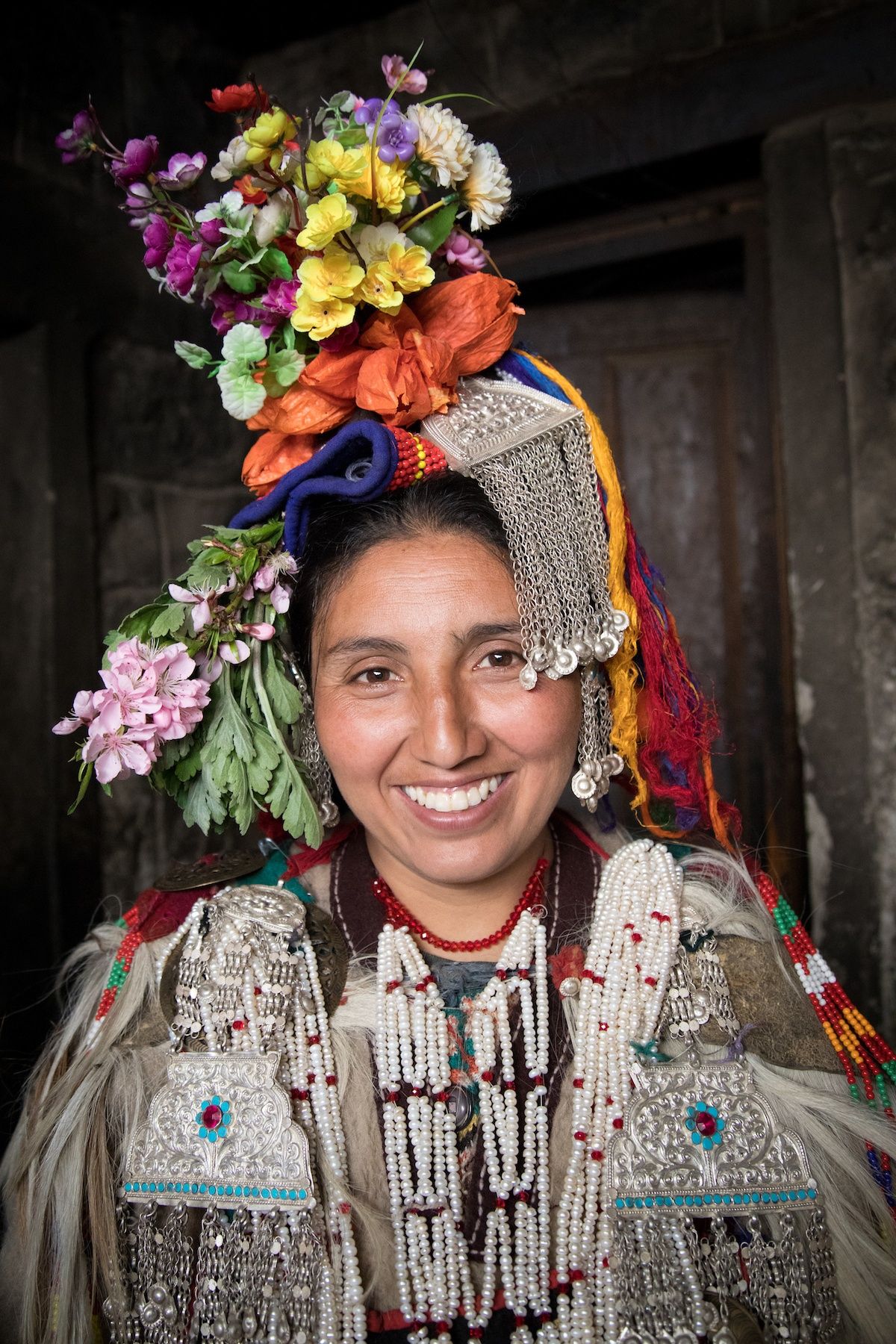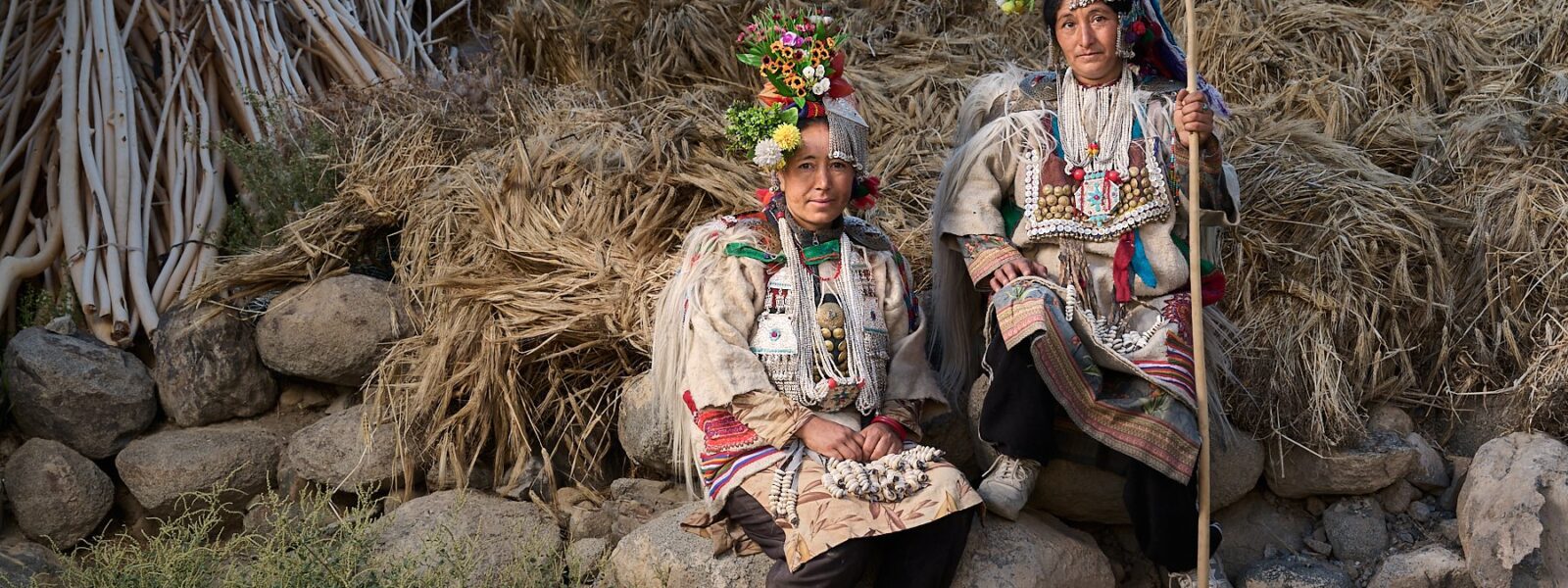The Aryan Valley in Ladakh is one of India’s most intriguing and culturally rich landscapes, steeped in history and untouched beauty. Located in the western part of Ladakh, this isolated valley is home to the Brokpa people, a tribe believed to be direct descendants of ancient Aryan settlers. For adventurous travelers, trekking through the Aryan Valley is not only a journey into breathtaking natural landscapes but also a rare opportunity to glimpse a culture untouched by time.
In this guide, we explore everything you need to know about trekking through the Aryan Valley, Ladakh’s hidden historical and cultural gem.
Introduction to Ladakh’s Aryan Valley and Its Historical Significance
Understanding Ladakh’s Aryan Valley in the Himalayas
The Aryan Valley, also known as the “Land of the Brokpa,” is often called Ladakh’s hidden cultural treasure. Situated along the Indus River, the valley consists of several small villages, including Dah and Hanu, known for their unique customs, language, and ancient traditions. For centuries, the Brokpa people have maintained their distinct cultural identity, which combines influences from Tibetan Buddhism and ancient Aryan heritage.

“Visiting the Aryan Valley felt like stepping into another world. The people are so warm, and their traditions are unlike anything I’ve seen. This is truly a hidden gem!” – Sarah Thompson, Canada, Travel Photographer
The Brokpa Tribe: Indigenous Inhabitants of Aryan Valley
The Brokpa tribe, indigenous to Aryan Valley, stands out for their unique appearance, with many possessing striking facial features and light eyes, a rarity in the region. The tribe’s legends suggest that they may be descendants of Alexander the Great’s soldiers, although no scientific confirmation supports this. The Brokpa people are known for their elaborate clothing, adorned with flowers and jewelry, and a rich oral history that dates back thousands of years. They are one of the few groups who continue to uphold an ancient lifestyle, blending influences of Tibetan culture with ancient Aryan traditions.
Why Trekking in the Aryan Valley is a Unique Experience
What Makes Aryan Valley Ladakh’s Hidden Cultural Treasure?
Unlike more popular trekking destinations in Ladakh, Aryan Valley remains largely unexplored. This remoteness has allowed the Brokpa tribe to preserve their unique culture and practices, making the Aryan Valley an appealing destination for those seeking an authentic cultural experience in Ladakh. The valley’s landscapes feature terraced fields, traditional stone homes, and views of the Indus River that make trekking here visually rewarding.
“Aryan Valley is like a living museum, and the culture here is fascinating. It’s rare to find a place so rich in history yet so far from the usual tourist path.” – Rajiv Mehta, India, Adventure Guide
Exploring Ladakh’s Uncharted Villages: Dah and Hanu
Dah and Hanu are two of the most famous villages in Aryan Valley and the epicenters of Brokpa culture. Here, visitors can explore ancient architecture, meet locals, and experience daily life, which revolves around agriculture and religious practices. Visiting these villages provides a deeper understanding of the Brokpa’s way of life and offers an immersive cultural experience for trekkers.
| Village | Highlights | Cultural Insights |
|---|---|---|
| Dah | Ancient stone homes, terraced fields | Known for annual harvest festival, floral headgear |
| Hanu | Scenic views of Indus River | Ritualistic dances, unique language |

Trekking Routes and Trails Through Aryan Valley
Best Trekking Routes to Discover Aryan Valley’s History and Culture
Most trekking routes begin from Leh and lead through the valley’s scenic trails that pass by terraced farms and ancient villages. The trail from Leh to Aryan Valley is filled with picturesque mountain views and accessible paths that gradually rise in altitude. Travelers can choose between multi-day treks or shorter hikes, both offering opportunities to interact with locals and experience the valley’s hidden history.
Popular Trekking Route Example
| Starting Point | Route | Highlights |
|---|---|---|
| Leh | Leh – Dah – Hanu | Explore Brokpa culture, mountain views |
| Lamayuru | Lamayuru – Dah – Hanu | Scenic Indus Valley, ancient ruins, remote trails |
Trekking Essentials for Ladakh’s Aryan Valley Adventure
Given the high altitude and remote location of Aryan Valley, trekkers should pack essentials such as layered clothing, sturdy hiking boots, altitude sickness medication, and food supplies. As the terrain can be rugged, trekking poles and hydration packs are also highly recommended.
Discovering the Culture and Traditions of the Brokpa People
Festivals and Celebrations in Aryan Valley
The Brokpa people celebrate a variety of festivals that blend Buddhism with ancient customs, including Bononah, a harvest festival that features traditional dances, songs, and community feasts. Attending these festivals offers a rare look into the Brokpa’s unique cultural identity, often celebrated with ceremonial attire and floral crowns.
“Seeing the Bononah festival in Aryan Valley was unforgettable. The energy, colors, and warmth of the Brokpa people are unmatched!” – Emma Hansen, Norway, Cultural Enthusiast
The Language, Dress, and Customs of the Brokpa People
Brokpa attire includes floral headgear adorned with local flowers, symbolizing prosperity and unity. The Brokpa language, though dwindling in speakers, adds a distinct soundscape to the valley, creating an immersive experience for travelers keen on discovering unique traditions. Many Brokpa customs revolve around family life, agricultural practices, and spiritual ceremonies, emphasizing a strong community bond.

Aryan Valley’s Natural Beauty and Unique Biodiversity
Flora and Fauna Unique to Ladakh’s Aryan Valley
The Aryan Valley is known for its diverse flora, especially during spring when wildflowers bloom across the valley. The valley’s unique high-altitude ecosystem also supports a variety of wildlife, including the rare snow leopard, ibex, and blue sheep. The biodiversity of Aryan Valley not only enhances its scenic beauty but also holds cultural significance for the Brokpa people, who regard certain plants and animals as sacred.
Ancient Terraced Fields and Sustainable Farming Practices
The Brokpa people have cultivated terraced fields for centuries, relying on sustainable farming techniques that work in harmony with the valley’s natural terrain. These terraces are a testament to the Brokpa’s agricultural ingenuity and contribute to Aryan Valley’s picturesque landscape. Wheat and barley are among the staple crops, and visitors can see how traditional farming shapes the local lifestyle.
Practical Travel Tips for Trekking in Aryan Valley, Ladakh
How to Reach Aryan Valley from Leh, Ladakh
The journey to Aryan Valley begins in Leh, where travelers can arrange private taxis or public transportation. The route typically takes several hours, with scenic views of the Indus River along the way. A comfortable option is to hire a local guide who can provide insights into Brokpa culture and ensure a safe journey through the valley’s remote paths.
Accommodations and Homestay Options in Aryan Valley
Accommodations in Aryan Valley are limited, but homestays offer a unique opportunity to experience the daily life of the Brokpa people. These homestays are basic yet comfortable and provide a rich cultural exchange. Some guesthouses also offer eco-friendly lodging, allowing travelers to explore the valley in an environmentally responsible way.
“Staying with a local family in Hanu was the highlight of our trip. We learned so much about the Brokpa way of life and felt welcomed every step of the way.” – Tom and Sarah, United Kingdom, Environmentalists
Frequently Asked Questions about Trekking in Ladakh’s Aryan Valley
Is it safe to trek in Aryan Valley?
Aryan Valley is considered safe for trekking, though altitude sickness can be a concern. With proper acclimatization and guidance from local experts, travelers can enjoy a safe journey.
What are the cultural etiquette practices in Aryan Valley?
The Brokpa people highly value respect for their customs. It’s best to ask permission before taking photographs, dress modestly, and observe sacred sites with reverence.
How physically demanding is the trek in Aryan Valley?
Trekking in Aryan Valley is suitable for moderate fitness levels, though beginners should prepare for high-altitude trekking conditions and rugged terrain.

Conclusion: Journey into Ladakh’s Hidden History and Cultural Riches
Aryan Valley is a destination unlike any other. From its stunning landscapes to its unique cultural traditions, it offers a rare experience for trekkers looking to explore Ladakh’s hidden history. The Brokpa tribe, with their ancient customs and close connection to nature, provide a window into a world far removed from modernity. For those willing to journey off the beaten path, Aryan Valley is a truly unforgettable destination that promises both adventure and enlightenment.
“Exploring Aryan Valley was an eye-opener. The Brokpa culture, the breathtaking landscapes, and the kindness of the people made this one of the best trekking experiences we’ve ever had.” – Lars and Ingrid, Sweden, Adventure Bloggers
Q&A Section
Q: When is the best time to visit the Aryan Valley?
A: The best time to visit is from May to October when the weather is mild and the trails are accessible.
Q: Are there guided tours available for Aryan Valley?
A: Yes, guided tours are available and are highly recommended to enhance the experience and understand the local culture better.
Q: Can I take photos of the Brokpa people?
A: It’s polite to ask for permission before photographing Brokpa individuals or sacred sites.
Q: Is there internet access in Aryan Valley?
A: Internet access is very limited; it’s best to prepare for an off-the-grid experience.
Q: What should I pack for a trek in Aryan Valley?
A: Pack essentials for cold weather, high-altitude gear, and trekking necessities like sturdy boots and layered clothing.








